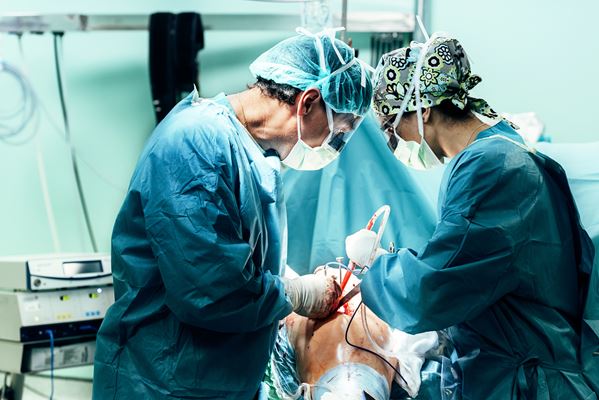Our highly experienced team is part of the Riverside Regional Medical Center Level II Trauma Program. We’re proud to provide emergency orthopedic trauma care for patients with complex fractures throughout our region.
Riverside Orthopedic surgeons are fellowship trained in orthopedic traumatology (study of wounds and injuries from trauma) and are certified by the American Board of Orthopedic Surgery. Together, they bring years of extensive experience caring for patients with complicated injuries in both the military and civilian settings.
Under the supervision of orthopedic trauma surgeons, our team of physician assistants, nurses, and administrative staff work together to give patients the best possible care. We deliver specialized care for your orthopedic traumatic injuries throughout your surgery, hospital stay, and office follow up.
Treatment options
We offer a full range of care for patients with severe fractures of the arm, leg, pelvis or spine. We also treat patients with multiple fractures. Treatment includes emergency care and post-emergency follow-up. Our bone and joint specialists can also help treat and correct deformities resulting from a trauma or previous injury.
- Acute fractures
- Dislocations
- Bone infections
- Complex peri-articular fractures
- Fracture non-unions and mal-unions
- Geriatric fractures
- Pelvis and acetabular fractures
- Post-traumatic deformity
Surgery for fractures
Some fractures need to be treated with surgery that allows the orthopedist to see the broken bone. This allows your doctor to realign the bones correctly. Once the bone is back in place, it can be held there with small plates and screws or by placing a rod inside the bone to stabilize it. These treatments allow you to use the injured arm or leg and help the broken bone heal correctly.
Surgery for dislocations
When a joint is dislocated, the ligaments and muscles around it are often injured. If you have a dislocated joint, it must be put back in place before it can work properly. If the bone or surrounding ligaments have been damaged, the joint might be unstable. Surgery can put the joint back in place and help repair the bones and ligaments.
Treatment of nonunion (incorrectly healed break)
A nonunion is broken bone that has not healed correctly. Although treating nonunions is complex, the OHSU fracture team has expertise in surgery, bone biology and infectious disease to address the causes of nonunion.
Nonunion has three major causes:
- Too much motion at the fracture site. If the bone was not stabilized enough when the fracture was first treated, the ends of the broken bones might not come together (unite) as they should.
- Conditions that keep new bone from forming. If you have diabetes, smoke or have a disease that affects your blood vessels, your body may not make new bone well. When your body does not make new bone to join the broken ends of the fracture, it does not heal.
- Infection at the fracture site. This is the most challenging cause of nonunion. Bacteria keep new bone from forming and break down the bone that is already there. Treatment includes surgery to remove the infected bone, stabilization of the bone and antibiotics for the infection.

